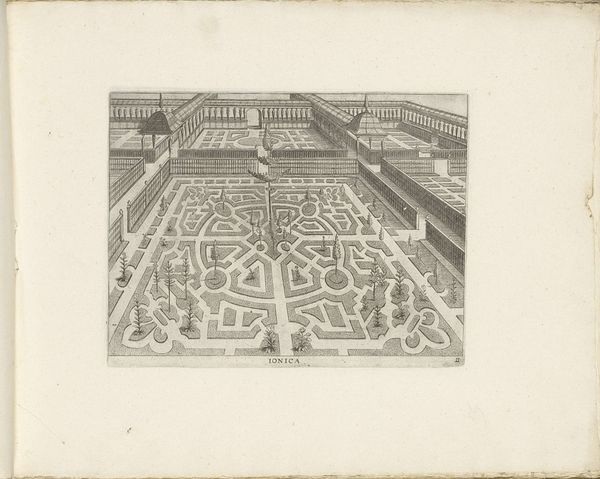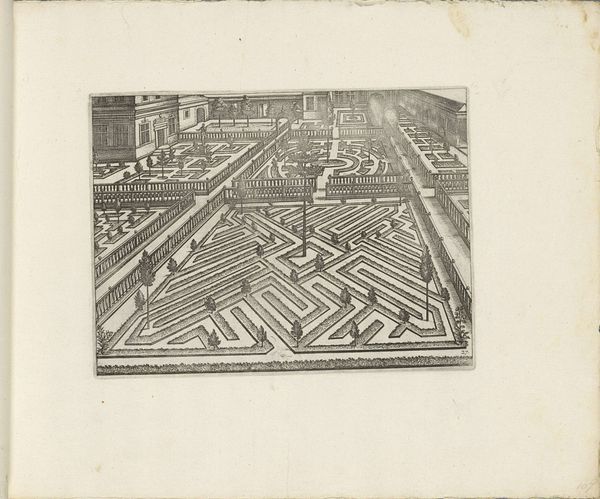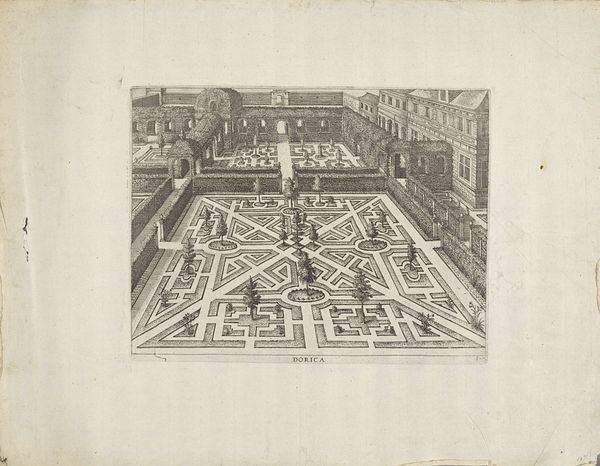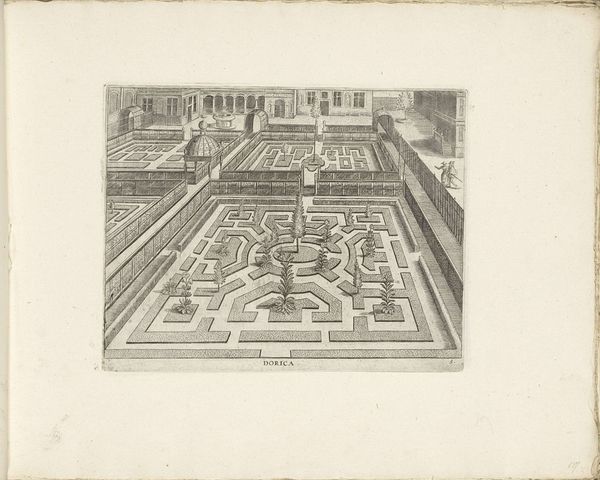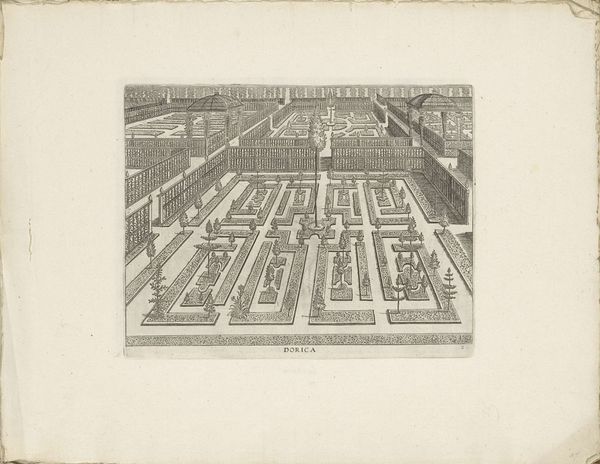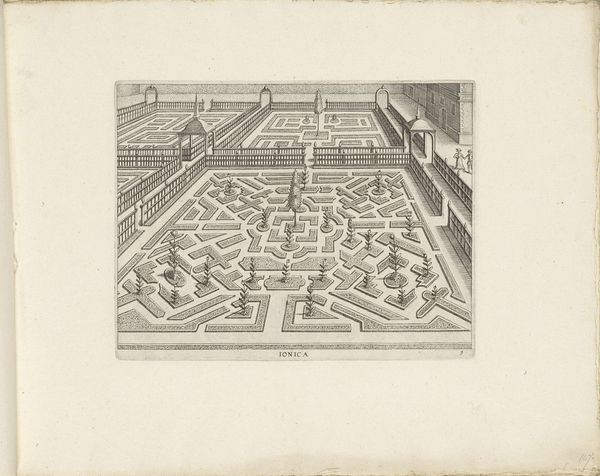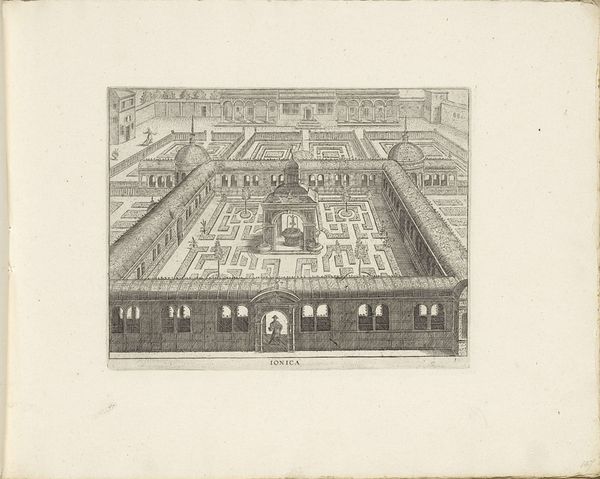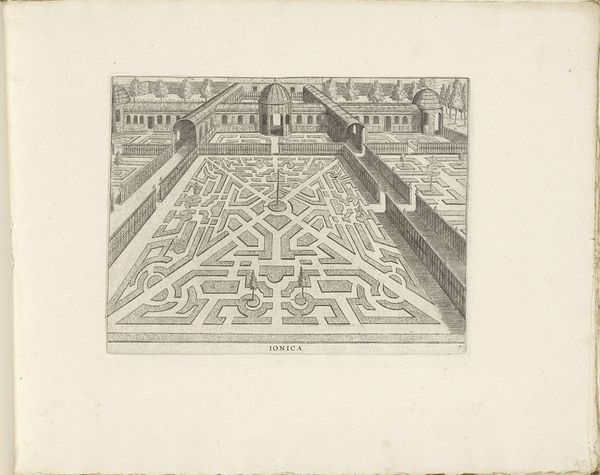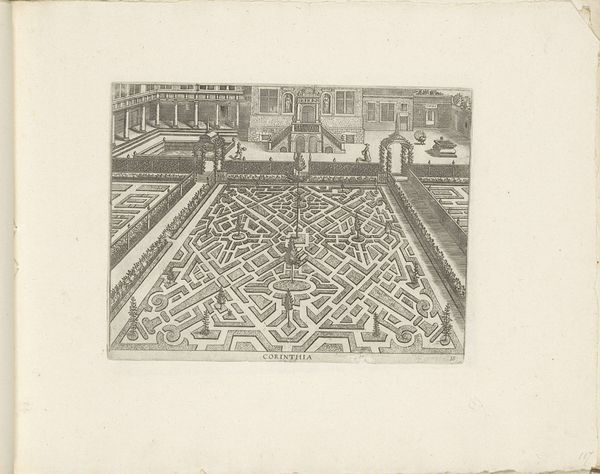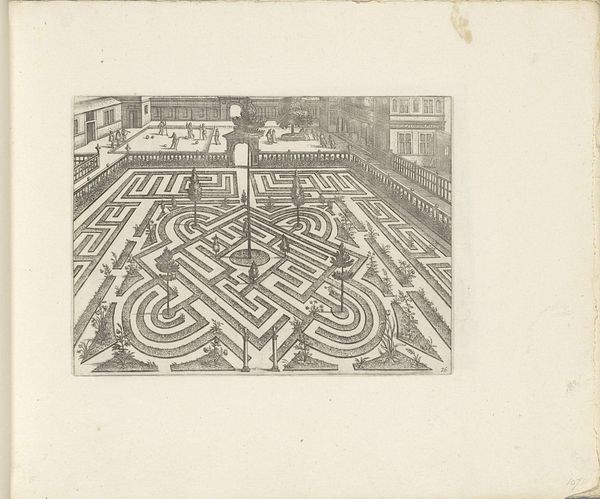
print, engraving
#
medieval
# print
#
landscape
#
geometric
#
engraving
Dimensions: height 190 mm, width 248 mm
Copyright: Rijks Museum: Open Domain
Curator: This engraving, titled "Tuin met parterre omgeven door hekken en open paviljoens," which translates to "Garden with parterre surrounded by fences and open pavilions," dates from approximately 1583 to 1640. It resides here at the Rijksmuseum and is credited to an anonymous artist. Editor: Immediately, I feel a strange mix of order and potential chaos, like a perfectly organized labyrinth that yearns to be wandered. Curator: Yes, that tension is quite present. The very idea of a "garden" was undergoing significant shifts during this period. Early modern gardens often served as statements of power and control over nature, reflecting social hierarchies and a desire to impose order on the environment. Editor: I see it! The garden becomes this almost theatrical stage where social games can be played out, right? It’s as if you're invited to be lost, to get delightfully disoriented. Curator: Precisely. And consider the medium: printmaking made images like this more widely accessible. This allowed for the dissemination of ideas about garden design and its social functions to a broader audience. Think about how this impacts questions around class and social status! Editor: I'm tickled by the high-angle view; it grants this sense of almost god-like power, and reminds me a bit of early video games. Like some beautifully rendered strategy map where players act on each other. Curator: It does abstract it somehow, flattening the power dynamics while simultaneously emphasizing them. One cannot ignore the constraints placed on freedom by social expectations of gender roles, class, and decorum, all mapped out into physical form within that geometric pattern. Editor: This really strikes me. So much to unpack from this unassuming engraving... from its engagement with a wider audience and potential social commentaries embedded within. What starts as something aesthetically appealing slowly exposes hidden structures and societal expectations. Curator: Indeed. By considering it within that context, and by blending it with the aesthetic observations that it initially brings up, we can continue finding it refreshing each time.
Comments
No comments
Be the first to comment and join the conversation on the ultimate creative platform.
